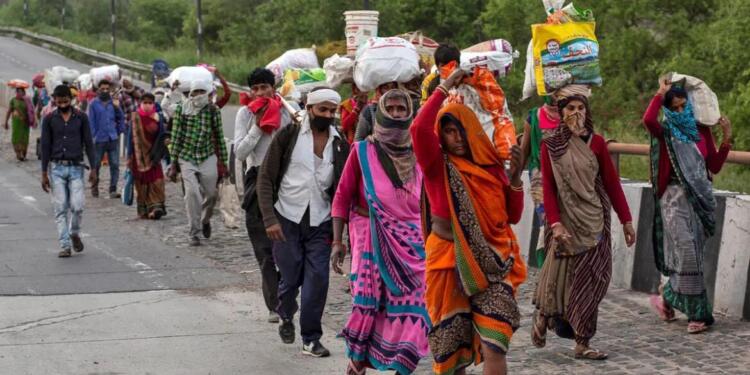Unemployment remains a critical issue in India’s economic landscape. The National Sample Survey Organization (NSSO) categorizes individuals as employed, unemployed, or neither seeking nor available for work. The unemployment rate, a key economic indicator, is calculated by dividing the number of unemployed workers by the total labor force and multiplying by 100. This seemingly simple formula, however, belies the complex reality of measuring unemployment in a diverse and rapidly changing economy like India’s.
Conflicting Data and Reports
Various sources provide differing unemployment estimates, leading to confusion and debate:
1. RBI’s KLEMS Database
The Reserve Bank of India’s KLEMS database offers comprehensive economic data, including labor employment figures across 27 industries. This extensive dataset aims to provide a holistic view of the Indian economy’s productivity and employment trends.
2. State Bank of India Report
SBI’s report claims significant job creation, countering other financial institutions’ findings. This discrepancy highlights the challenges in accurately measuring employment in a country with a large informal sector.
3. Annual Survey of Unincorporated Sector Enterprises (ASUSE)
This survey estimates India’s total labor force at 59.7 crore. The ASUSE plays a crucial role in capturing data from the unorganized sector, which forms a significant portion of India’s economy.
4. Centre for Monitoring Indian Economy (CMIE)
CMIE reported an eight-month high unemployment rate of 8.2% in June-July, contradicting official narratives. The CMIE’s methodology and findings often differ from government sources, adding to the complexity of understanding India’s true unemployment situation.
Ground Reality of Unemployment
Despite conflicting reports, several incidents highlight the severe unemployment problem:
1. Uttar Pradesh police recruitment: 47 lakh applicants for 60,000 positions
2. Railway Recruitment Board exam: 1.25 crore aspirants in 2022
3. Protests against the Agnipath scheme in multiple states
These events underscore the intense competition for limited job opportunities, especially in the public sector. The sheer number of applicants for government positions reveals the widespread unemployment and underemployment issues plaguing the country.
Reasons for Varying Unemployment Estimates
The discrepancies in unemployment data stem from several factors:
1. Complex economic structure: India’s economy is a mix of formal and informal sectors, making comprehensive data collection challenging.
2. Large unorganized sector: With 94% of the labor force in the unorganized sector, accurate measurement becomes difficult.
3. Outdated census data: The last census was conducted in 2011, leading to outdated baseline information.
4. Economic shocks: Events like demonetization, GST implementation, the NBFC crisis, and the COVID-19 pandemic have caused significant economic disruptions.
Challenges in Data Collection
Accurately measuring unemployment in India faces several hurdles:
1. Difficulty in surveying the vast unorganized sector: With millions of small businesses and informal workers, comprehensive surveys are logistically challenging.
2. Structural changes due to economic shocks: Recent economic upheavals have altered the employment landscape, making pre-existing data potentially obsolete.
3. Outdated sampling frames: Using old census data for current surveys may lead to inaccurate results.
4. Potential upward bias: Changes in rural-urban ratios and business sizes could skew employment estimates.
Differing Methodologies
The variation in unemployment figures also stems from different approaches to data collection and analysis:
1. PLFS vs. CMIE definitions of employment: While PLFS includes unpaid and underemployed workers, CMIE focuses on income-generating employment.
2. Inclusion of unpaid and underemployed workers: Official data often counts individuals working without pay or in low-productivity roles as employed.
3. Disguised unemployment: Official statistics may not capture those who have given up looking for work or are severely underemployed.
Addressing the Unemployment Challenge
To tackle unemployment effectively, India needs a comprehensive strategy:
1. Separate policy focus: Employment generation should be a distinct policy objective, not just a byproduct of GDP growth.
2. Demand and supply-side policies: Initiatives should boost job creation while also enhancing workforce skills.
3. Improved skills training: Aligning education and vocational training with industry requirements is crucial.
4. Regular data updates: Frequent censuses and economic surveys are necessary for accurate policymaking.
5. Inter-agency coordination: Better synchronization between various data-collecting bodies can lead to more consistent and reliable unemployment figures.
Unemployment and Economic Growth
The persistent unemployment problem raises questions about the nature of India’s economic growth. While GDP figures have shown positive trends, the benefits of this growth haven’t translated into proportional job creation. This “jobless growth” phenomenon underscores the need for a more inclusive economic model that prioritizes employment generation alongside overall economic expansion.
Future Outlook and Potential Solutions
Addressing unemployment in India requires a multifaceted approach:
1. Boost manufacturing sector: Initiatives like “Make in India” need further impetus to create large-scale employment.
2. Support MSMEs: Small and medium enterprises are significant job creators and need targeted support.
3. Enhance agricultural productivity: Modernizing agriculture can create better rural employment opportunities.
4. Promote entrepreneurship: Encouraging startups and self-employment can help absorb the growing workforce.
5. Focus on skill development: Continuous upskilling and reskilling programs are essential in a rapidly evolving job market.
In conclusion, tackling unemployment in India remains a complex yet crucial challenge. Accurate data collection, targeted policies, and a focus on skill development are essential steps toward reducing unemployment and fostering inclusive economic growth. As India navigates its intricate economic landscape, addressing unemployment must remain a top priority for policymakers, businesses, and citizens alike. Only through concerted efforts and innovative solutions can India hope to harness its demographic dividend and ensure productive employment for its vast and growing workforce.





























